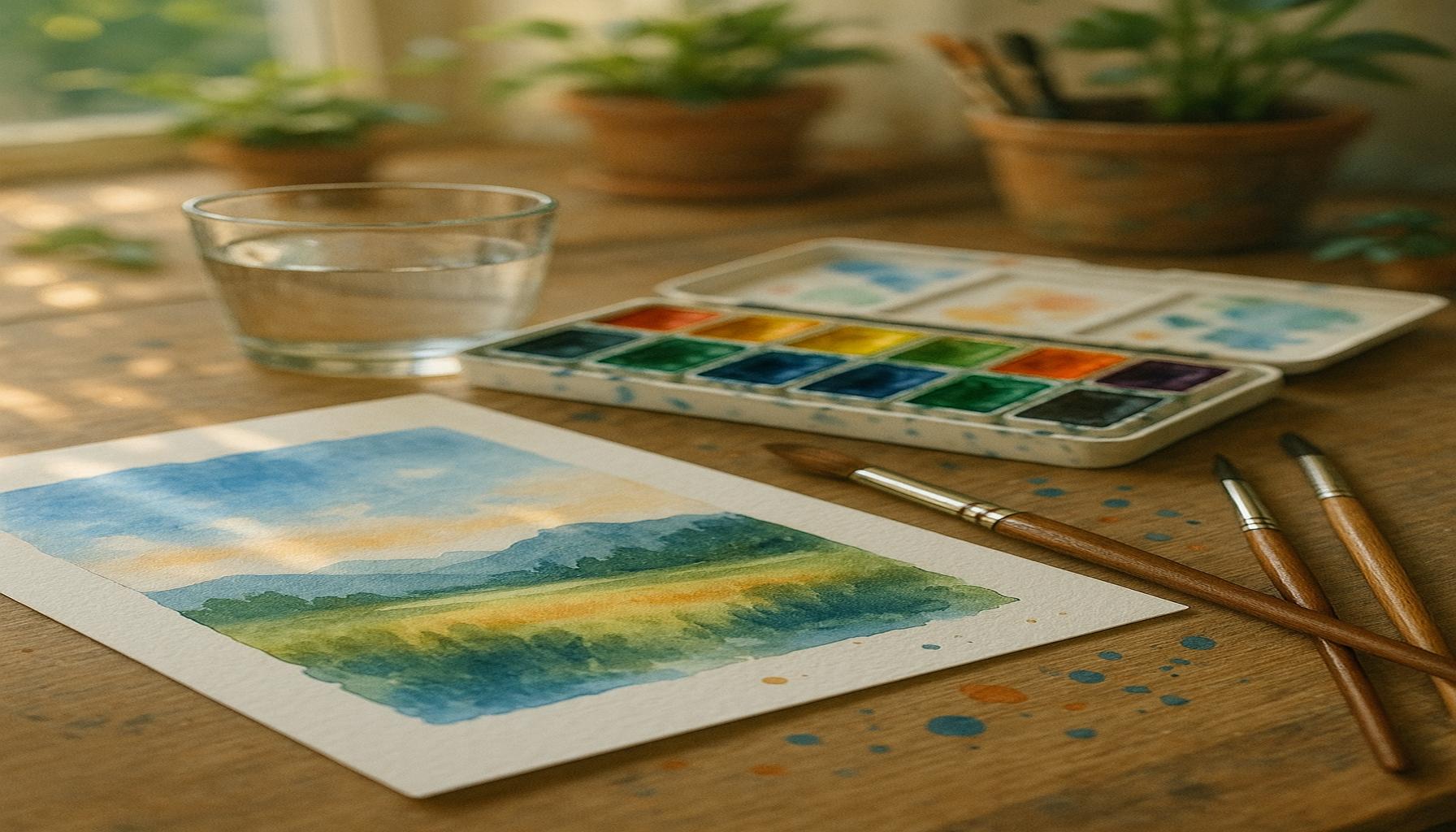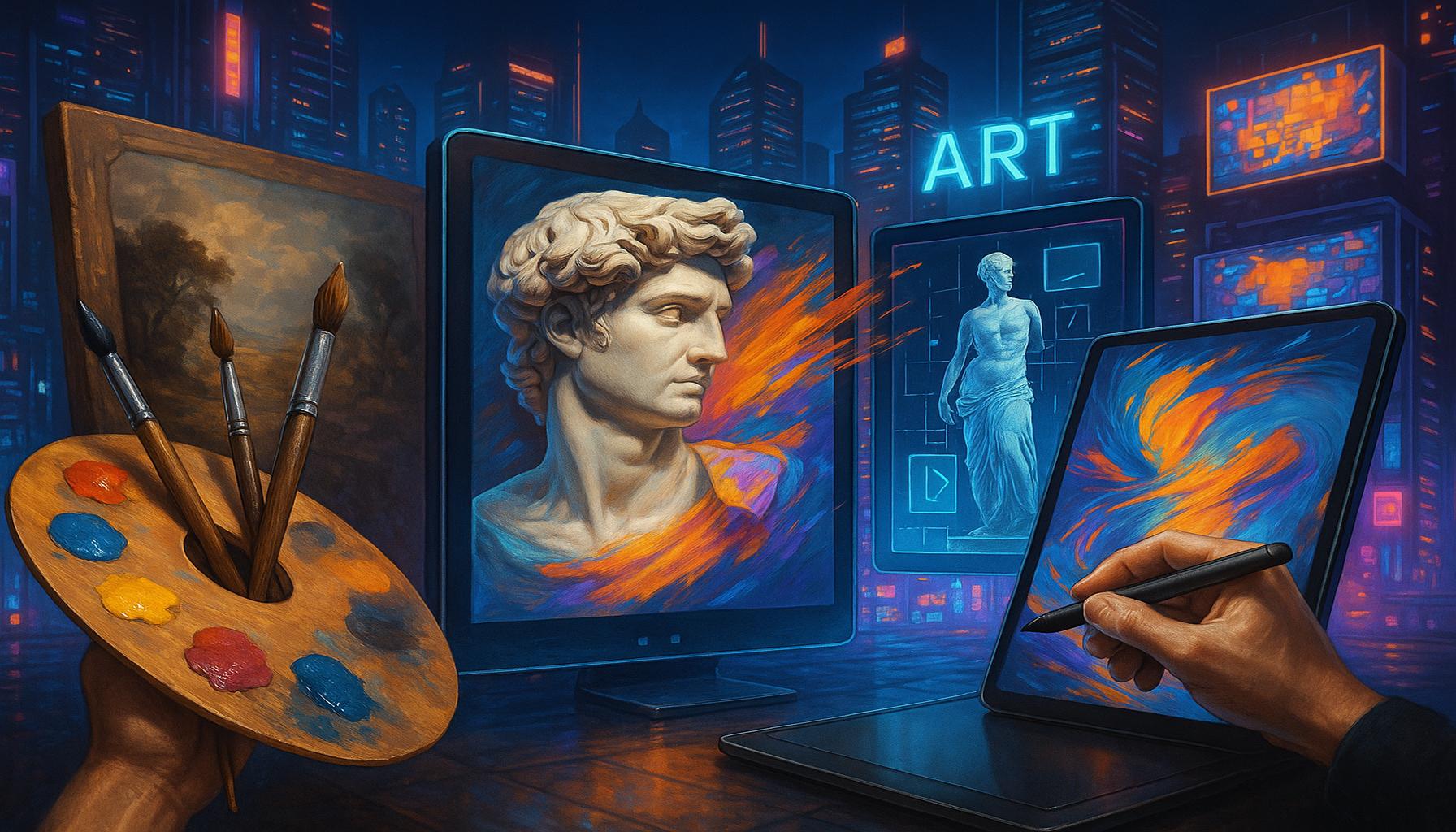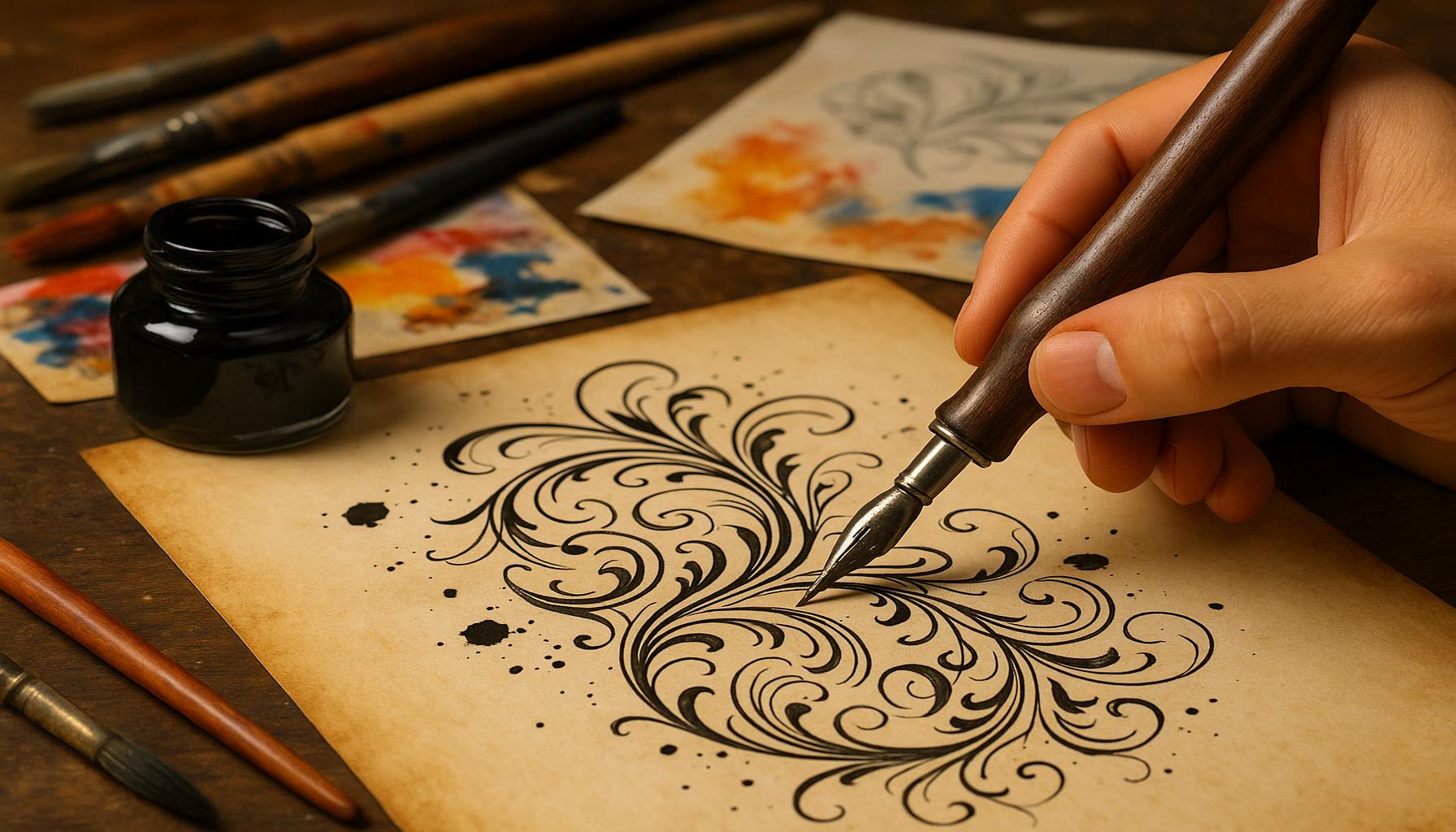Watercolor Techniques Embrace Freedom Expression in Traditional Art
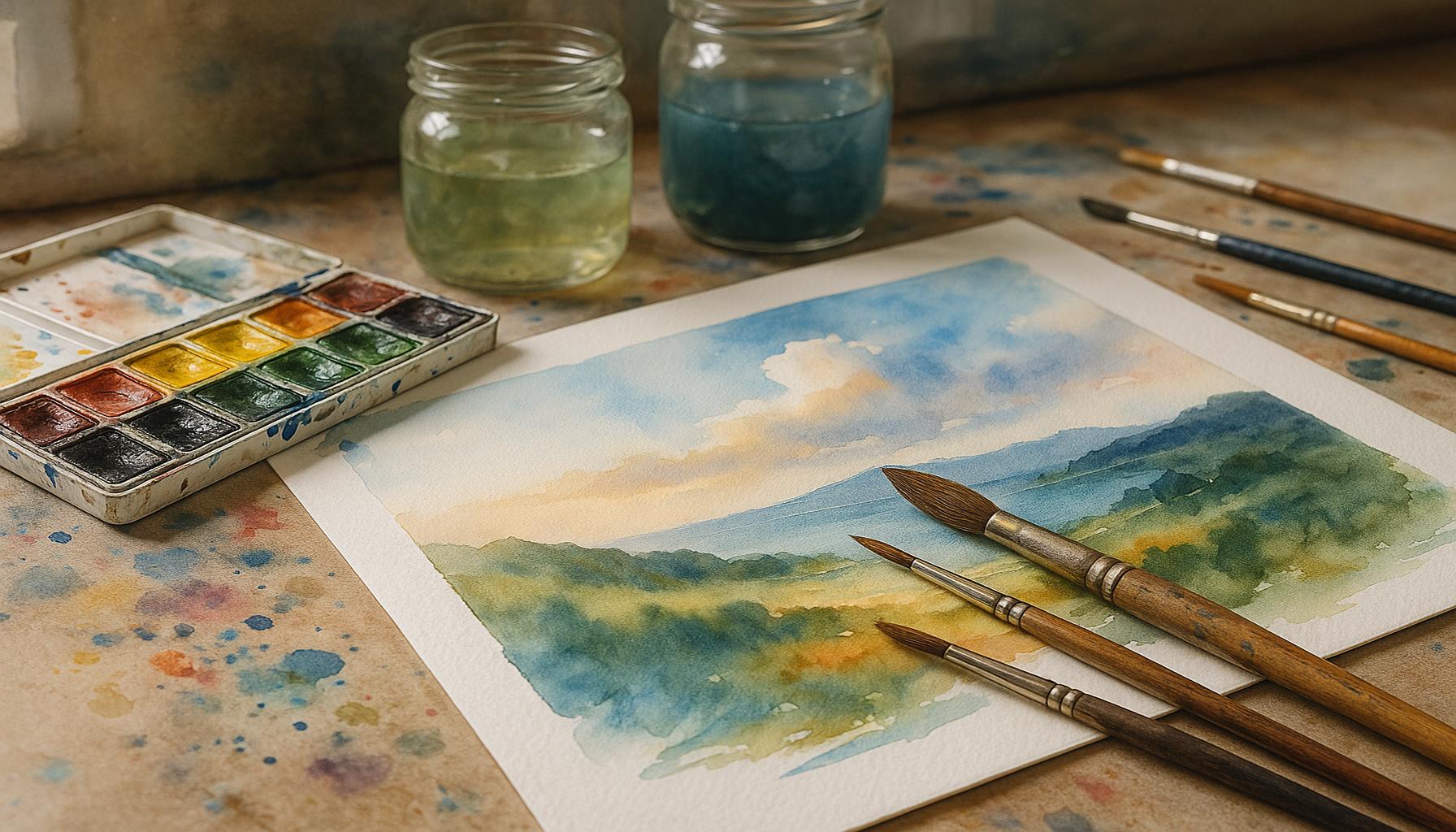
Embrace the Fluidity of Watercolor
Watercolor painting is not just a technique; it’s an expressive journey that offers a canvas for creativity and individuality. With its vibrant hues and delicate textures, watercolor allows artists to explore their emotions and tell stories through each stroke. This artistic form has gained immense popularity as a creative hobby, captivating both beginners and seasoned painters alike.
Why Watercolor Matters in Creative Hobbies
Its unique characteristics make watercolor a compelling choice for anyone looking to embark on a creative path. Some benefits include:
- Accessibility: Minimal gear needed, making it easy to start.
- Versatility: Suitable for various styles, from realism to abstract.
- Freedom of Expression: Encourages spontaneous creativity and experimentation.
This article will dive into the Top 5 watercolor techniques that can enhance your artistic repertoire. Prepare to unleash your imagination and discover how each technique can contribute to your personal style in this beautiful medium.
Top 5 Watercolor Painting Techniques: Exploring Freedom and Expression in Traditional Art
Watercolor is more than just a painting medium; it is a realm of expression that allows the artist to explore freedom and creativity in a unique way. In this detailed exploration of the top five watercolor painting techniques, we will delve into the vibrant and fluid world of this traditional art form. Whether you’re a curious beginner or an experienced artist, these techniques are sure to inspire your artistic journey.
5. Wet-on-Wet
The “wet-on-wet” technique serves as an intriguing introduction for those venturing into the realm of watercolor art. When utilizing this method, artists begin by applying washes of water onto the paper before adding any pigment. The magic unfolds as colors begin to diffuse organically, blending to form smooth, ethereal effects. Mastering this method requires a skilled balance of controlling water and paint, yet it offers an invaluable gateway into the experimentation with color combinations and contrasts. For example, by merging blues and greens, one might effortlessly evoke a serene landscape or oceanic vista.
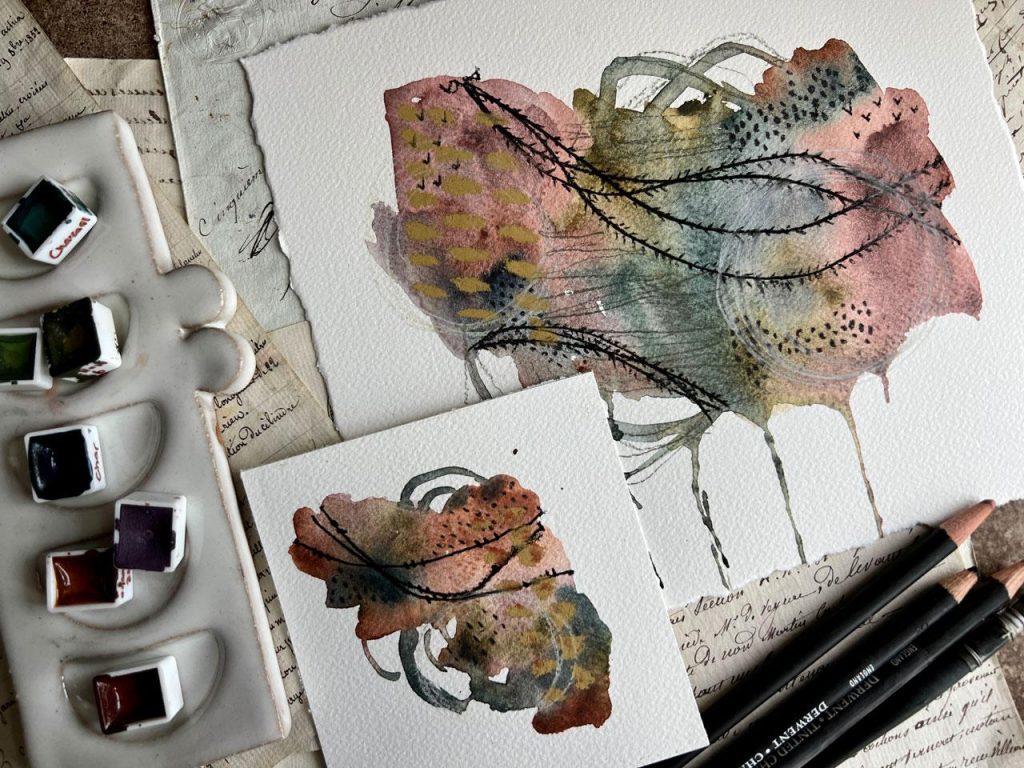
- Benefits: Excellent for creating gentle backgrounds and atmospheric effects, adding mood and depth to landscapes.
- Challenges: Difficulty in control as outcomes can often be unpredictable, demanding patience and practice to avoid unwanted bleeding of colors.
Explorations using wet-on-wet can lead to the creation of whimsical skies or dream-like underwater scenes. Famous artists, such as J.M.W. Turner, have historically embraced similar techniques to craft romantic and expressive renditions of natural phenomena.
4. Wet-on-Dry
For painters desiring sharper definition and a greater degree of control, the “wet-on-dry” technique stands as an ideal approach. This method involves applying watercolor to dry paper, ensuring that contours and forms maintain precision and clarity. It proves especially advantageous for detailed portraits and scenery, where every brushstroke must count. This technique results in a more controlled interaction between water and paint, maintaining the quintessential transparency characteristic of watercolor.
- Benefits: Greater control and precision, making it perfect for fine details and clean edges.
- Challenges: Achieving fluid color blending can be more complex, requiring an adept understanding of timing and moisture levels.
Artists such as Winslow Homer have utilized the wet-on-dry technique to achieve stunning detail in complex compositions. By mastering this method, artists can create intricate works such as portraiture or architectural imagery, maintaining distinct lines and rich, layered textures.
3. Gradated Wash
The gradated wash technique is a potent tool for those looking to craft smooth transitions between color tones. Artists employ layers and varying amounts of water to cultivate a gradient effect, starting with an intense hue that gradually lightens as it moves across the paper. This method is indispensable for depicting skies transitioning from day to night or for replicating the reflective qualities of water. Precision in layering and tone control is key to mastering this technique.
- Benefits: Dynamically attractive results that are visually engaging, offering a sense of gradual flow and movement.
- Challenges: Requires meticulous execution across multiple layers with precise color tonality control.
The versatility of a gradated wash makes it a favorite among illustrators and landscape artists alike. Its application can be witnessed in portraying vast, sweeping skies or soft, rolling hills, creating a sense of depth that pulls the viewer into the scene.
2. Splattering and Texture
Embracing the unpredictability of watercolor, the technique of splattering and adding texture offers an exciting means of infusing individuality and energy into artwork. By splattering water or pigment onto the canvas, a variety of spontaneous effects and textures emerge. Artists frequently employ tools such as sponges or paper towels to manipulate the paint, resulting in unique patterns. This technique breathes life and movement into compositions, making them vibrant and full of character.
- Benefits: Produces unique, creative effects that add intrigue and character to the artwork.
- Challenges: Demands patience and precision to manage the unpredictability and minimize excessive randomness.
Artists such as Andy Warhol have experimented with splattering, integrating dynamic and abstract elements into their work. The dance of color and texture achieved through this technique invites viewers to engage with art on a multisensory level, stimulating both visual and tactile senses.
1. Preserving White
The technique of preserving white is undeniably one of the most striking and engaging within the watercolor discipline. Rather than adding highlights after applying the color, this method involves masking areas of the paper prior to painting, thereby preserving their luminous qualities. This approach is especially valued in pieces that require stark contrasts between light and shadow, such as in illuminated subjects or intricate lace patterns. Not only does preserving white yield a dramatic outcome, but it also exemplifies a refined mastery of the medium, highlighting an artist’s proficiency in paint control.
- Benefits: High-impact results that elevate the artwork to a level of spectacular beauty and craft.
- Challenges: Requires foresight and meticulous planning to prevent errors and preserve intended light areas.
In the work of Albrecht Dürer, the preservation of white stands as a testament to intricate detail and dramatic expression. By maintaining untouched sections of paper, these artists communicate a narrative of illumination, drawing viewers into a meticulously constructed world of light and shadow.
In conclusion, the art of watercolor is a journey encompassing both technique and intuition. The five techniques outlined above offer a foundational understanding of the myriad possibilities available to the watercolor artist. Whether through the ethereal landscapes of wet-on-wet or the precise detail of wet-on-dry, each method offers a path to discovering personal expression within the world of watercolor art. The freedom to explore within these techniques invites artists of all levels to continuously expand their horizons, integrating tradition with innovation in their creative endeavors.
| Category 1 | Category 2 | Category 3 | Category 4 |
|---|---|---|---|
| Layering Techniques | Water Control | Color Mixing | Brush Techniques |
| Layering allows artists to build depth and complexity. Using transparent glazes, different hues can be created and visual interest is heightened. | Controlling the amount of water used with the paint is crucial. It can influence the texture, vibrancy, and fluidity of the work. | Mastering color mixing opens a world of possibilities, creating numerous shades and tones from a limited palette, enhancing creativity. | Different brush strokes can convey emotion and movement. Flatter brushes can create broader washes, while finer brushes add intricate details. |
| Texture Creation | Palette Knife Techniques | Wet-on-Wet | Transparent vs. Opaque |
| Artists can introduce texture through various methods, like salt or plastic wrap; these methods foster spontaneous and unexpected results that can lead to exciting outcomes. | Using a palette knife allows for scraping and layering of colors, fostering a unique depiction often invisible with brushes. | The wet-on-wet technique allows paint to blend seamlessly on the canvas, creating ethereal, fluid designs full of movement. | Understanding the difference between transparent and opaque paints guides the artist in making dynamic decisions about layering and depth. |
The myriad of techniques within watercolor painting provides artists with a robust toolkit for expressing their creativity. The use of layering techniques offers a pathway to create depth that captures both light and shadow, mesmerizing viewers as they witness the emergence of intricate color variations. Water control plays a pivotal role, as the quantity of water dramatically affects the final appearance of the artwork, dictating its vibrancy and texture.Through color mixing, artists are empowered with the ability to create an endless spectrum of tones from a limited selection of primary colors. This mastery not only accentuates their work but also fosters innovation, leading to breathtaking, original compositions. Equally important are the brush techniques, where each stroke can evoke distinct emotions and narrative elements within the piece. Different brushes yield vastly different results; flat brushes create grand washes, while finer brushes hone intimate details.Moreover, texture creation introduces a sensory dimension to watercolor art. Using unconventional methods can result in captivating surprises that challenge traditional perceptions of the medium. The application of a palette knife offers a contrasting approach, producing sharper lines and clear images that stand out in the watercolor genre. Adopting the wet-on-wet technique allows for a harmonious blend of colors that can create serene landscapes or dynamic abstractions filled with energy and motion. Knowing when to use transparent versus opaque paints serves as a guidance tool, helping artists make informed choices about their compositions, ultimately leading to striking visual narratives that resonate with audiences.In exploring these techniques, artists unlock a world of possibilities, paving their paths for artistic expression and exploration in traditional watercolor painting. Each technique contributes uniquely to the creative process, beckoning artists to embark on a journey where freedom and expression not only thrive but also evolve.
Frequently Asked Questions about Watercolor Painting Techniques
What are the basic materials needed for watercolor painting?
The essentials for watercolor painting include high-quality watercolor paper, a set of watercolor paints, brushes designed specifically for watercolors, a palette for mixing colors, and a container of water. Opting for materials like 100% cotton paper and synthetic or natural hair brushes can significantly impact the quality of your work. Experimenting with different tools can help you understand the differences and find what best suits your style.
How can I achieve a smooth wash in watercolor?
A smooth wash is fundamental in watercolor painting, requiring practice and the right technique. Start by choosing a flat or wash brush, wet the area you wish to paint, and then apply the color in even, horizontal strokes. Maintaining a consistent amount of water and paint in your brush is crucial to avoiding streaks. Using techniques like the wet-on-wet method can also aid in achieving these smooth transitions.
How do I fix mistakes in watercolor painting?
Watercolor can be unforgiving, but some techniques can help you manage mistakes. If the paint is still wet, use a clean, slightly damp brush to lift the color off the paper carefully. For dry errors, a gentle touch with a kneaded eraser can lighten areas. Refining your skills in controlling the water-to-paint ratio will naturally help in reducing mistakes as you gain more experience.
What techniques can I explore to add texture to my watercolor paintings?
To add texture, artists often use techniques such as salt application, where salt crystals are sprinkled onto wet paint to create unique patterns. Additionally, techniques like splattering, dry brush, and lifting can create various effects and depth in a painting. Each method offers its own unique texture that can be employed strategically to enhance your artwork.
How can I improve my skills in watercolor painting?
Continual practice is key to mastery in watercolor. Engage in regular painting sessions and challenge yourself with new techniques and subjects. Attending workshops, watching tutorials, and studying works by watercolor masters can provide fresh insights. Keeping a painting journal to track your progress and experiments can be a valuable tool in your artistic growth.
Conclusion
Exploring the vibrant world of watercolor painting unveils a realm of artistic expression that marries freedom with tradition. As we’ve journeyed through the myriad techniques of this beloved medium, it becomes clear how watercolor allows for both precise control and spontaneous creativity. From mastering the delicate wet-on-wet method to the bold dry brush technique, each style and approach enables artists to convey emotion and narrative through a cascading palette of transparent hues.
Color mixing and layering stand out as essential skills that invite artists to experiment and discover unexpected outcomes, ultimately enriching their creative experience. These techniques underscore the significance of understanding color relationships and recognizing the transformative power of water as an artistic partner. By embracing this unique dance between water and pigment, artists can achieve depth and luminosity like no other medium.
The freeing aspect of watercolor painting lies in its unpredictability, encouraging artists to relinquish some control and embrace the fluidity of process and imagination. This characteristic aligns with a growing interest in creative hobbies, offering a mindful escape and a tangible connection to the timelessness of traditional art practices.
In conclusion, delving into the techniques of watercolor painting not only hones artistic skill but also nurtures a deeper appreciation for the art form’s ability to capture the ephemeral beauty of the world around us. For those seeking to refine their craftsmanship or simply explore a new creative outlet, watercolor painting offers an inviting landscape where the limits are defined only by the artist’s vision. Embracing this traditional yet ever-evolving practice, artists and hobbyists alike can continue to discover new dimensions of expression and creativity.

